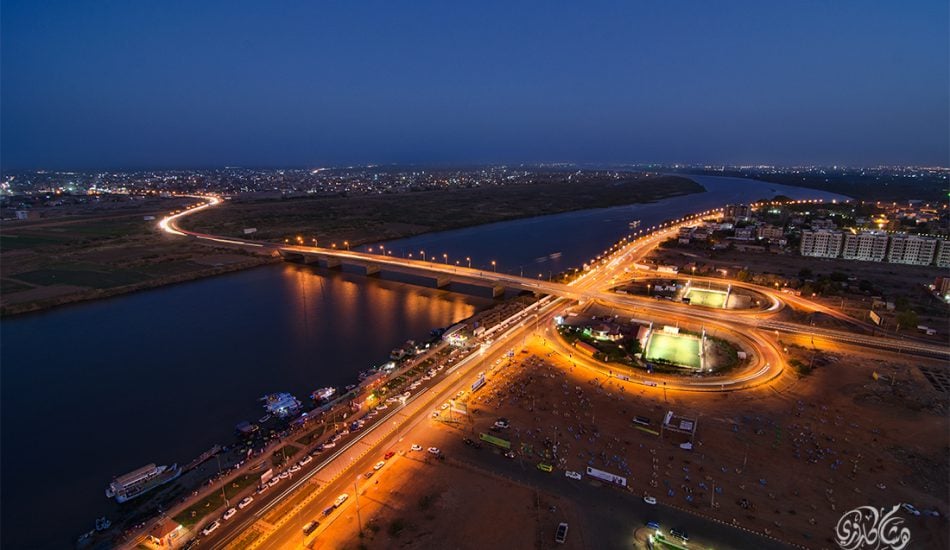
Inefficient water use and the problem of water networks and wastewater
Using 1990 as a baseline year, it was calculated that in order to achieve the Millennium Development Goals (MDGs) for water and sanitation by 2015, Sudan would have to attain 82% access to improved drinking water sources and 67% access to adequate sanitation.[1][2] Sanitation coverage in Gezira State has been improved from 32% in the 1990s to 42% in 2010, and has improved coverage faster than the national average. The results show increasing sanitation coverage in Sudan as a whole, compared with the decreasing trend in sanitation coverage in Africa. [3]
However, access to improved drinking water decreased from 67.4% in 1997 to 55.5% in 2014.[4] This decrease was attributed to:
- Frequent emergencies;
- Inadequate sector funding;
- Inadequate capacity of water quality and quantity;
- Weak sector coordination;
- An inadequate enabling environment;
- The dearth of resources to invest in conservation, water quality and monitoring.
Internal conflict and increasing water insecurity
Many disputes over natural resources are closely linked to water. Wadi Ku, in Darfur, is an example. The Myseria/Dinka tribesmen dispute over water and pasture, in the contested area of Abyei, is another. This conflict necessitated the involvement of UN peace forces.
Due to the limited supply of water in these areas, haffirs and khors (seasonal water courses) have become flashpoints of conflict between neighbouring pastoral tribes. In several instances, warring parties have made water sources inaccessible, for example by planting land mines around them. International agencies and NGOs that recognize the importance of the crucial resource are guided by the ‘Do No Harm’ principle in all their interventions, in order to avoid or mitigate dispute among and between communities.[5]
Water is not always available in the right place at the right time in Sudan. In addition, droughts have become cyclical and rainfall is slowly shifting southwards. Desertification has thus become a chronic and increasing frontline problem. Rapidly growing human and livestock populations on the one hand and repeated droughts on the other have put intense pressure on the already deteriorating grazing range and dwindling water resources, leading to conflict and tribal wars. This is evident in Darfur and Abyei.[8] It is also a conflict between two ways of life: pastoralism and agriculture.
Coping with growing demand and urbanization
Like many African countries, most of Sudan’s water distribution systems were installed by the colonial powers. After independence and the subsequent population explosion, not many have been added.[6]; To exacerbate matters, the 1984 drought resulted in massive urban migration, putting further stress on the water infrastructure. In the early 1960s, the government launched a campaign to sink thousands of boreholes in rural areas, without due regard for the carrying capacity of the natural resource base. Inevitably, water yards became the foci of environmental degradation.[7]
Adapting to climate change
The Higher Council of Environment and Natural Resources leads the National Adaptation Programme of Action (NAPA) to enhance resilience to rainfall variability and drought-induced water shortage in highly vulnerable areas. It has identified four vulnerable states, namely the Nile, north Kordofan, South Kordofan and Gedaref.
Other areas of relevant activity include land tenure reform, credit provision to farmers and pastoralists, marketing, encouraging agroforestry, range rehabilitation, promoting livestock production and removing the monopoly of gum arabic.
[1] Sudan MDGs Report 2010. A National Population Council, General Secretariat report prepared towards SDG.
[2] Bashier, E.E.; Bashir, N.H.; Mohamadani, A.; Elamin, S.O.; Abdelrahman, S.H., 2015. ‘A challenge of sustaining water supply and sanitation under growing population: A case of the Gezira State, Sudan.’ International Journal of Water Resources and Environmental Engineering, 7(9), 132-138.
[3] Ministry of Electricity and Dams, Dams Implementation Unit, 2012. Available at www.oicvet.org/Presentations/Water_Management_Symposium/Sudan/Sudan.pdf, accessed [19/8/2017]
[4] WHO/UNICEF Joint Monitoring Programme for Water Supply and Sanitation, 2011. Available at http://data.worldbank.org/indicator/SH.H2O.SAFE.ZS?locations=SD, accessed [19/8/2017]
[5] UNEP, 2009. Available at http://postconflict.unep.ch/publications/UNEP_Sudan_RnR.pdf, accessed [19/8/2017]
[6] Odada, E., 2009. Overview of Africa Water Challenges and Opportunities. IAP Workshop, March 2009, Pretoria, South Africa.
[7] IFAD, 2013. A Comprehensive Study in Greater Kordofan. University of Khartoum, Institute of Environmental Studies.
[8] Saeed, A., 2015. ‘The Land, People, Livelihoods and Development in Bahr Arab Watershed.’ Concept Note.
